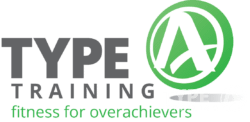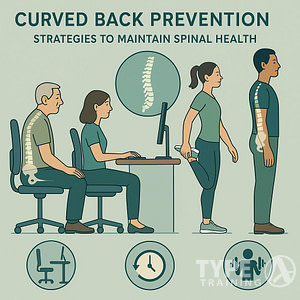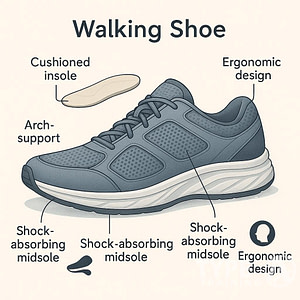Running might seem straightforward, yet achieving the right form is key to ensuring a smooth experience.
Understanding Good Running Form is crucial for every runner.
While it’s tempting to simply lace up and hit the road, taking the time to learn the correct technique can help prevent injuries.
Good Running Form helps to optimize your running efficiency and minimize injury risks.
Popular posts:
Focusing on each part of your body, from your head to your toes, can make a big difference.
Attention to your posture and movements will set you on the right path.
Let’s explore how to run with the best form possible.
Key Takeaways
- Proper form is important for injury-free running.
- Focus on body posture and movement.
- Learn step-by-step to improve your technique.
Understanding Good Running Form
Good Running Form includes maintaining a strong posture throughout your run.
Focusing on how you run can make a big difference.
With Good Running Form, you can enhance your overall performance.
While you may have learned to run as a child, many habits from daily life can change your posture and movement.
Spending long hours sitting or looking at your phone can cause issues like a weak arm swing or a stiff lower back. Your steps can turn from strides into shuffles.
The good news: With practice and the right techniques, you can improve how you run.
This means fewer injuries and more enjoyable runs.
Remember these tips: Keep your head up and eyes forward.
Relax your shoulders; they should be low, not hunched.
Good Running Form entails keeping your arms relaxed and in sync with your stride.
Important steps: Swing your arms naturally at your sides, bending elbows at about a 90-degree angle.
Ensure your feet land below your body rather than in front of it.
Make gradual changes and practice regularly to see progress in your running technique.
Perfecting Running Skills: Head to Toe
Your head position plays a vital role in achieving Good Running Form.
Keep Your Head Up
When you’re running, pay close attention to your head position.
Many people have a tendency to look down, which can lead to other forms of poor posture.
Instead, keep your head up and your eyes looking forward. Your chin should be level with the ground. This helps maintain a slight forward lean that is beneficial for movement.
Stand Tall with Good Alignment
Proper posture is key to efficient running.
Feel your shoulders relax and roll them back slightly to avoid slumping.
Engaging your core is important to keep your torso upright.
Think about aligning your shoulders over your hips for better balance and efficiency.
Keep Your Arms Close
As you run, your arms should stay close to your body.
Avoid letting them hang loosely.
Keep them angled comfortably at your sides without clenching. Holding them at a right angle is optimal for energy-efficient movement.
Bend at the Elbows
A slight bend in the elbows is natural for running.
To master Good Running Form, remember to keep your body aligned.
This helps keep your arms in a position that supports your stride.
Avoid clenching your fists too tightly. Instead, let your hands gently cup to maintain relaxation and prevent excessive tension.
Relax Your Hands
Keep your hands soft while running.
Imagine loosely holding a fragile object without crushing it. This relaxed state helps your elbows to move in rhythm with your legs.
Use Your Arm Swing
Your arm movement is an essential part of running dynamics.
As you move, make sure your arms drive forward and back. Avoid letting them swing across your body, as this can create unnecessary rotation. A strong arm swing contributes to propelling your body forward more effectively.
Steady Your Hips
Running involves balanced movements, and your hips play a big role.
Engaging your core is essential for maintaining Good Running Form.
Maintain level hips to avoid imbalances.
Focus on engaging your core to stabilize your hips.
This helps keep your movement fluid and efficient, preventing dipping from side to side.
Control Leg Motion
The power in your stride comes from controlling your leg movements.
Engage the muscles in your glutes and hamstrings actively.
Good Running Form ensures that you maximize power in your stride.
Consider the motion as similar to cycling, where you push forward and pull back. This generates a smooth, powerful stride.
Watch Your Foot Strikes
Focus on achieving Good Running Form by practicing regularly.
Pay attention to how your feet hit the ground.
Aim for a light landing, mainly on the midfoot or forefoot, not a heavy heel strike.
This reduces unnecessary impact and energy expenditure. A light foot strike also decreases the risk of injury, helping you run more comfortably.
All the Elements of the Best Running Technique
Incorporating the best running techniques can improve your efficiency and reduce the chance of injury.
Start by planning a straightforward 30-minute jog on flat ground.
In each 4-minute phase, run as usual for three minutes. Focus the remaining minute on a single part of your body.
Create awareness by ensuring your head remains parallel to the ground, giving you a clear view ahead.
Keep your shoulders loose to prevent tension and mimic elite runners by maintaining stability in your hips, which helps in efficiently transferring energy.
Utilize an effective arm swing by moving them back and forth as your body propels; this can significantly impact your pace and endurance.
Pay attention to your legs, keeping them engaged, and maintain a stride where your feet land lightly beneath your body.
Incorporating Good Running Form principles can lead to longer, injury-free runs.
This can enhance your cadence and running economy.
As you become more familiar with these elements, integrating them in the last six minutes can create a stronger and faster running form.
Strength training, like squats and core exercises, supports your form by enhancing stability and power, especially crucial for distance runners.
These practices play a role in building endurance and preventing common running injuries.
Consistency is key; repetitive practice in these techniques can help you progress steadily.
Adopting Good Running Form will lead to improved performance over time.
Adopt Proper Running Form
Mastering the right form in running takes practice and dedication.
Begin by focusing on your posture and each part of your movement: head, shoulders, arms, hips, legs, and feet.
Keep your body slightly leaning forward with a relaxed upper body. Maintain a natural arm swing and ensure your knees land above your feet.
Whether you’re jogging or sprinting, aim for smooth stride rhythms by increasing your steps gradually.
Improving cadence to 180-200 strikes per minute helps in enhancing efficiency and reducing the risk of injury.
Ultimately, mastering Good Running Form is a journey that requires commitment.









